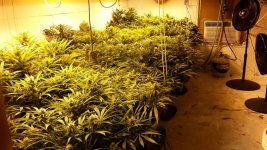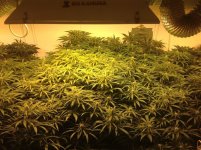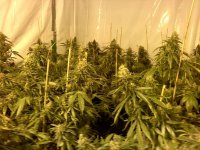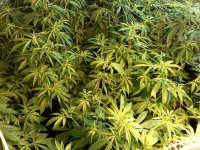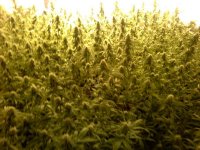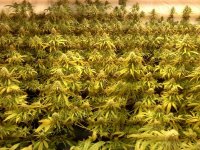Defoilating speeds up plant growth hahaha NOT it slows plant growth
Does it?
Have you tried it to find out?
#2 defoilating a plant can go hermie on you ???
Can it?
Have you tested the theory to find out?
Fck yea what causes hermies STRESS ???? you think plucking leafs of a plant is not STRESS ???? Think again it is
Is it?
Have you tested the theory and found a higher hermy rate?
Millions of years of evolution and a MJ plant doesn't naturally drop its leafs to make more bud ?? hahaha cmon man mother nature is powerful
And there's you with a scrog screen.
Did mother nature install that for you? Or is it man made like the rest of your grow room, your nutrients, the light they receive, and the pinching and bending you do to fit them into the screen.
Don't use the mother nature argument where it doesn't apply. It makes you seem like you're not thinking about what you say.
You say more branches from defoilating again i ask you how long it took is there not other alternatives for more branching
like topping cropping fimming all these will work much faster with better results
But what about nature's way? And what about stress?
Contradiction?
ask your self how photosynthisis really works google it pretty simple all in the leaf area
And yet the plant still grows perfectly well without them. There's a question to be asked based on that.
Feel free to completely ignore it though.
does defoilating effect osmosis ???? does it effect transpiration
NO LEAFS = NO C02 uptake
No CO2 uptake. So, dead plants.
Well, that's proven categorically not to be true by literally thousands of growers of different crops worldwide.
It seems facts matter less and less as your post goes on.
Your "answers" leave you with more questions for you to ponder. Like, if the plants don't breathe properly or photosynthesise when defol'ed, why do they harvest well? Or if the plant hermies, why are there seemingly no reports of this from growers who practice it? Are they lying? is it all a conspiracy now?
If these questions don't make you stop and think then nothing I say will. You've made your mind up, so move on. Nobody is listening to you at this point anyway. Agree to disagree and call it a day.

